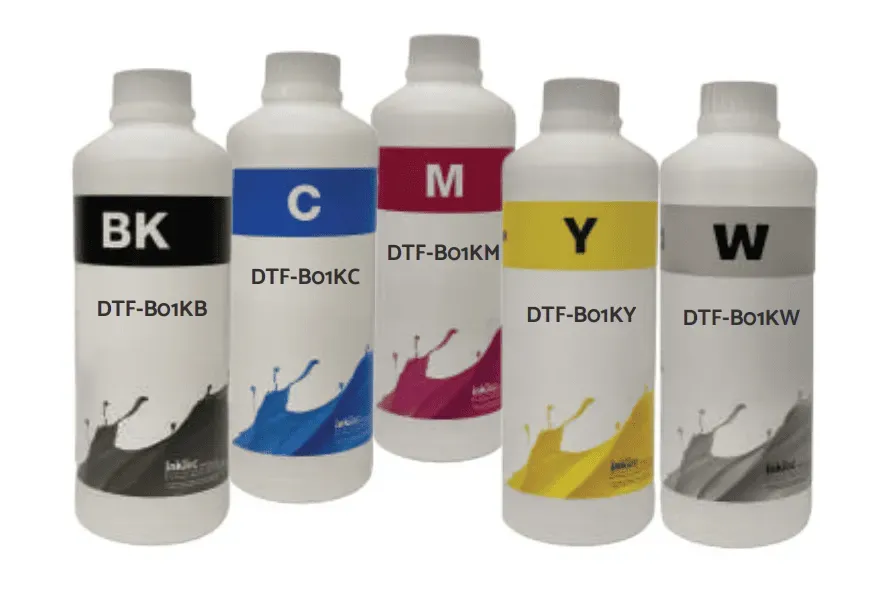In the vibrant realm of custom garment printing, DTF ink and film have emerged as game-changers, redefining how designs are transferred onto fabrics. This innovative approach to DTF printing marries flexibility with high-quality output, appealing to both novice hobbyists and seasoned professionals alike. By leveraging DTF transfer film in combination with superior DTF ink quality, users can achieve stunning, long-lasting prints that stand out in any crowd. In this detailed guide, we will navigate the essential aspects of DTF inks and films, ensuring you maximize your printing endeavors. Whether you’re looking to produce intricate designs or simply enhance your print techniques, our insights will empower you to attain optimal results with ease.
Custom garment printing, particularly through innovative methods like direct-to-film (DTF) printing, is revolutionizing the creative landscape. At the heart of this process lies the use of specialized transfer films alongside high-performance inks that deliver stunning results. With a growing industry leaning towards efficiency and quality, it’s crucial to understand how these components affect the overall print durability and vibrancy. This article will delve into the intricacies of DTF inks and films, illuminating their importance in achieving exceptional custom prints. By exploring various techniques and best practices, readers will gain a comprehensive understanding of how to elevate their printing projects effectively.
Understanding DTF Printing Technology
DTF printing, or Direct to Film printing, revolutionizes the way we envision custom garment printing. Unlike traditional methods such as screen printing, DTF employs a unique process where designs are first printed onto a specially formulated transfer film using vibrant DTF inks. This allows for a more straightforward application process, significantly reducing setup time and costs. The ability to print on a variety of fabrics, including cotton and polyester, demonstrates the technology’s flexibility, making it a substantial asset for both small and large runs of custom apparel.
Moreover, DTF printing integrates modern technologies that enhance color vibrancy and material adaptability. The direct application of DTF ink onto transfer film ensures that even the most intricate designs can be captured without loss of detail. As this method gains popularity, understanding the specifics of DTF printing can empower users to produce high-quality garments that stand out for both their visual appeal and durability.
Frequently Asked Questions
What is DTF ink and film used for in custom garment printing?
DTF ink and film are essential components in the DTF (Direct to Film) printing process, allowing for vibrant and durable prints on various fabric types. This method enables designers to transfer custom prints onto garments, ensuring high quality and longevity.
How does DTF printing compare to traditional screen printing?
DTF printing offers several advantages over traditional screen printing, including versatility in fabric types, cost-effectiveness for small runs, and less complex setup requirements. DTF ink and film can produce similar or better print quality, making it an appealing option for custom garment printing.
What factors affect the quality of DTF ink and film prints?
The quality of DTF ink and film prints is influenced by several factors, including the type of DTF ink used, the quality of transfer films, printer settings, and post-processing techniques. Ensuring you use high-quality materials and fine-tuning your equipment can significantly enhance print durability and vibrancy.
Can DTF prints withstand multiple washes?
Yes, prints made with high-quality DTF ink and film are designed to be durable and resistant to fading and cracking even after numerous washes. Proper application techniques further extend the life of the print, making them ideal for custom garment applications.
What mistakes should I avoid when using DTF ink and film?
Common mistakes to avoid in DTF printing include neglecting to preheat the fabric, skipping the adhesive powder application, and failing to maintain your printer. These oversights can lead to poor print adhesion and diminished quality.
What are the latest trends in DTF ink and film technology?
Recent trends in DTF printing include advancements in ink formulations that improve vibrancy and flexibility, as well as updates in software and printhead technology. Staying current with these innovations allows printers to enhance their techniques and output in the evolving market.
| Key Points | Details |
|---|---|
| What is DTF Printing? | DTF printing involves printing designs onto a special transfer film coated with DTF ink, which is then transferred to fabric using heat and pressure. |
| Benefits of DTF Inks and Films | 1. Versatility: Can be applied to different fabrics. 2. Durability: Resistant to fading and cracking. 3. Cost-Effectiveness: More economical than traditional printing. |
| Optimal Use of DTF Ink and Film | 1. Quality of Materials: Use high-quality inks and films. 2. Print Settings: Fine-tune printer settings for quality. 3. Post-Processing: Proper heat press settings. |
| Industry Trends | Continuous advancements in ink formulations and technology are enhancing DTF printing. |
| Common Mistakes to Avoid | 1. Neglecting to preheat fabric. 2. Skipping adhesive powder application. 3. Improper printer maintenance. |
Summary
DTF ink and film are pivotal to the custom garment printing process, offering unique advantages for creators. From its versatile application across various fabrics to its impressive durability, DTF printing stands out as an innovative method that reduces setup costs and complexities associated with traditional printing techniques. As this technology continues to evolve with new trends and enhancements in materials, understanding the intricacies of DTF ink and film will help both beginners and professionals excel in their printing endeavors, ensuring vibrant and high-quality designs that endure over time.



